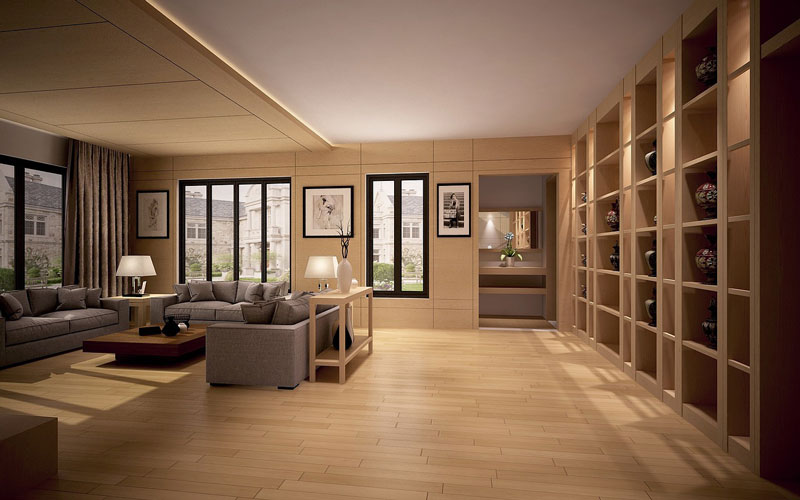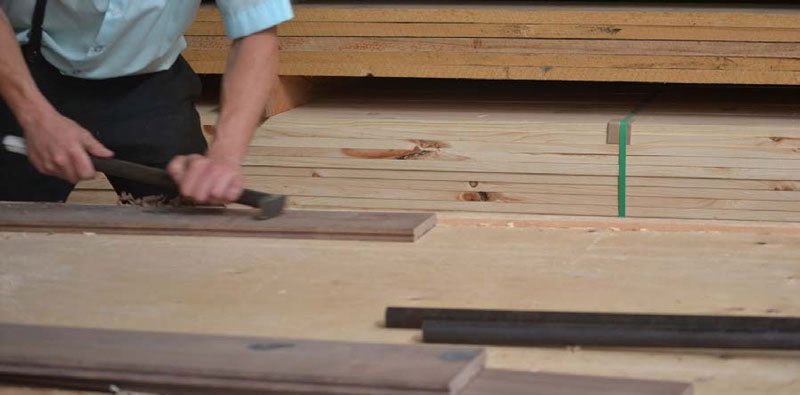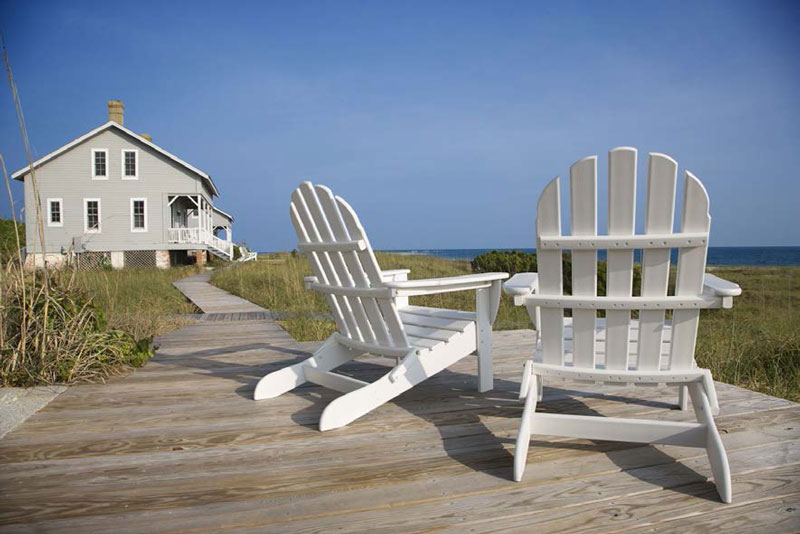Wide plank flooring comes in many types and species, so it can take a bit of research to figure out which variety is the best fit for your home or project.
First, you’ve got to consider what kind of look you would like to achieve. Wide plank floors complement a variety of styles, so here are just a few ideas to start off your brainstorming session:

Fresh, Modern
If you’re looking to give your room a facelift, consider the following products and combinations:
- Naturally dark species like walnut or brown maple will impart a modern look to the room. Alternately, you could apply a dark ebony or black stain to a light-colored species like white oak or ash.
- Gloss and semi-gloss finish offer a crisp, classy look.
- If you’d like to update the look of your flooring without completely replacing it, you might consider sanding it down and applying a new stain and/or finish to freshen things up.
Vintage
If your decorating style is rustic or vintage, there are great wide plank options for you:
- Red oak, white oak, white pine, and American cherry offer classic appeal because of their status as mainstay species in American homes.
- Reclaimed and distressed wood add vintage charm to any space. They’re perfect to install in high-traffic areas because further wear and tear only adds to their appeal.
- Hit-or-miss eastern white pine is perfect for achieving a rustic look because it is hand-distressed and full of beautiful knots.
Beachy
If you’d like to create an at-the-beach look or put down wide plank flooring in your seaside home, consider the following species and stain combinations:
- White oak floors paired with a gray-aged stain will offer a beachy, weathered effect.
- A driftwood lye stain will mimic the look of driftwood that’s just washed up on the beach.
- White-washed wide plank floors will make a space look fresh and clean.
Random widths vs. all one width
Another factor to consider when choosing a wide plank floor is whether you would like the planks to be the same width or random widths.
Random-width wide plank floors are the more versatile of the two — they can be used in vintage and modern settings alike. Wide plank floors that are a single width usually lend the room an upscale look.
Engineered vs. solid
Should you choose solid or engineered wide plank floors? The humidity of the air in your location and the in-house location of your flooring (above-grade or below-grade) should ultimately inform your decision.
Extra dimensional stability is needed when working with wide plank flooring. This is because wide planks fluctuate more readily than narrow planks in response to moisture changes in the air.
Therefore, you should go with engineered wide plank floors if you live in an area with a high potential for humidity fluctuations, or if you are installing the floor in a below-grade environment like a basement or garage.
Drastic humidity fluctuations can result in split-outs in solid wide plank floors. But engineered floors, which have more dimensional stability, are less likely to encounter this problem. Be sure to use a sawn veneer for the engineered instead of rotary peeled. Over time, rotary peeled can crackle with swings in humidity and temperature.
If the area in which you live has stable humidity year-round, you might be able to install solid wide plank floors without any problems. Consider choosing quarter sawn floors for extra insurance against humidity problems, as they are more dimensionally stable than plain sawn planks.
Selecting the right wide plank floor for your home or project can be difficult, but taking your unique needs and ideal style into consideration will make things a bit easier.
For more flooring ideas and inspiration, check out this series on finding the best hardwood flooring for any room.



